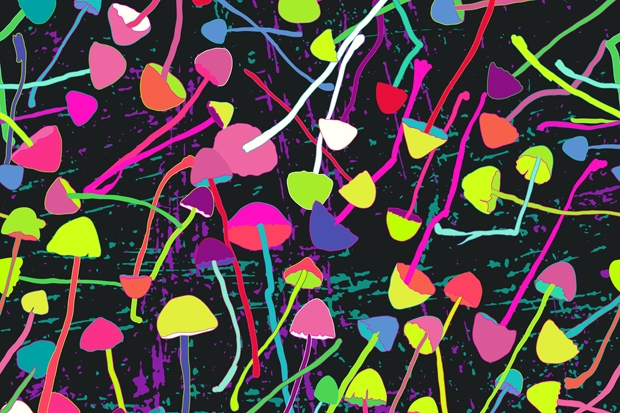The fag end of October. Dark evenings. My smelly old Barbour. Chopping and splitting wood. Uncanny stillnesses. Psychedelic maple trees. The thin winter piping of robins. Sodden leaves clinging to the soles of my boots. And Liberty Caps dotting the pastures.
Our Liberty Cap is an insignificant-looking thing. A bent, spindly stalk supports a tiny parasol tapering to the distinctive nipple. The parasol is rusty brown when wet, drying in the sunshine to a pale yellow. They grow singly or in small groups. The psychoactive agents are psilocin and psilocybin. (Therapists in the United States lawfully give cancer patients psilocybin to take them out of themselves and cheer them up. The intensely mystical experience reported by three quarters of them apparently drives a coach and horses through their narrow egotistical perspectives, resulting in lasting cheerfulness.) British Liberty Caps are among the most potent hallucinogenic mushrooms in the world; the psychoactive constituents account for anything up to 2 per cent of their dried weight. Generally speaking, a dozen of these magic mushrooms eaten straight from the ground might be enough to send you on your way for four to five hours. Double that and you’ll be in the fast lane. Our nit-picking law says we may pick and eat them in their natural state, but if we ‘prepare’ them in any fashion — dry them, for example, or make a pot of tea with them — we will be subject to the stiff penalties associated with the Class As.
The first time I ate magic mushrooms was one autumn in my early twenties. I was picking potatoes with a gang of itinerant labourers in a muddy field in Oxfordshire, and I got chatting to the fellow in the next furrow.









Comments
Join the debate for just £1 a month
Be part of the conversation with other Spectator readers by getting your first three months for £3.
UNLOCK ACCESS Just £1 a monthAlready a subscriber? Log in